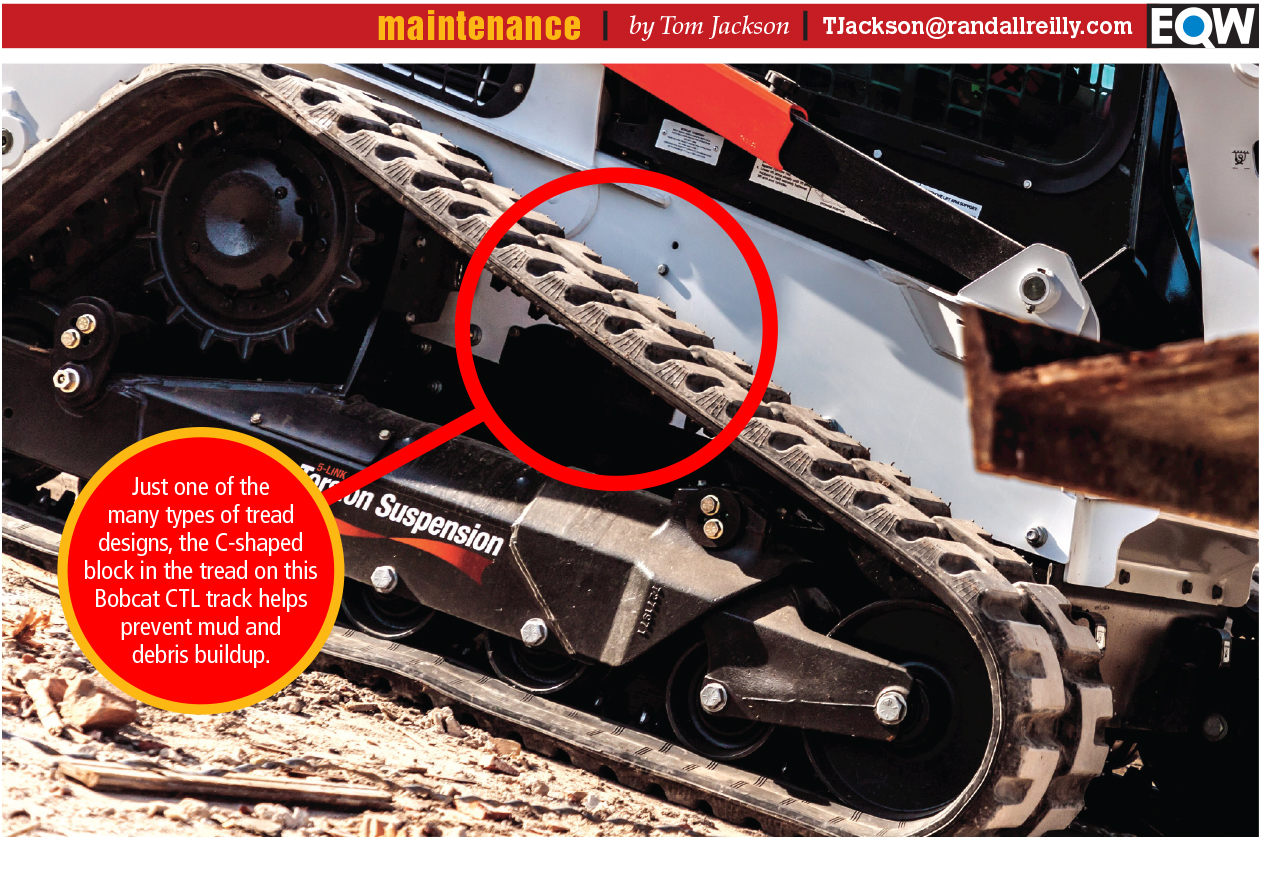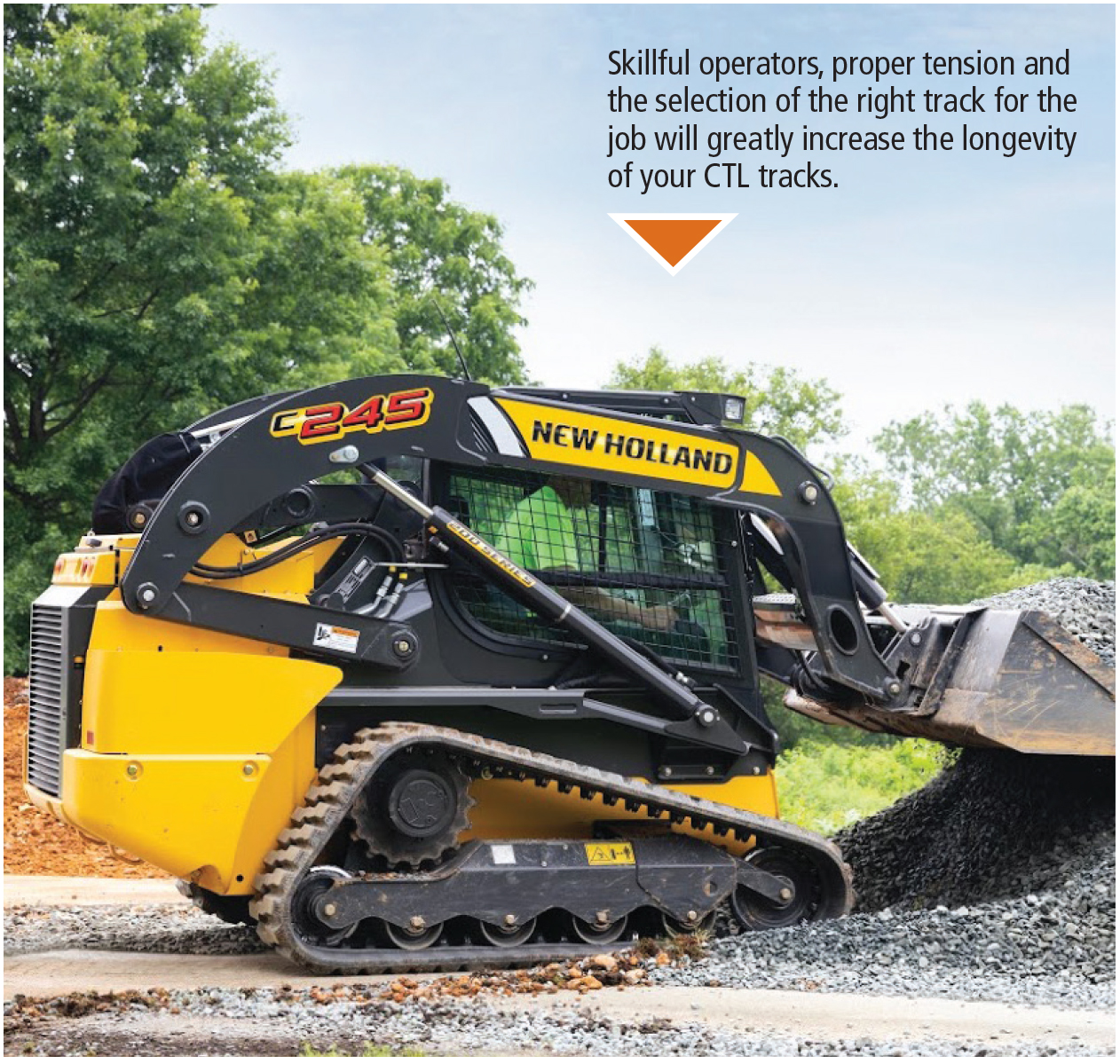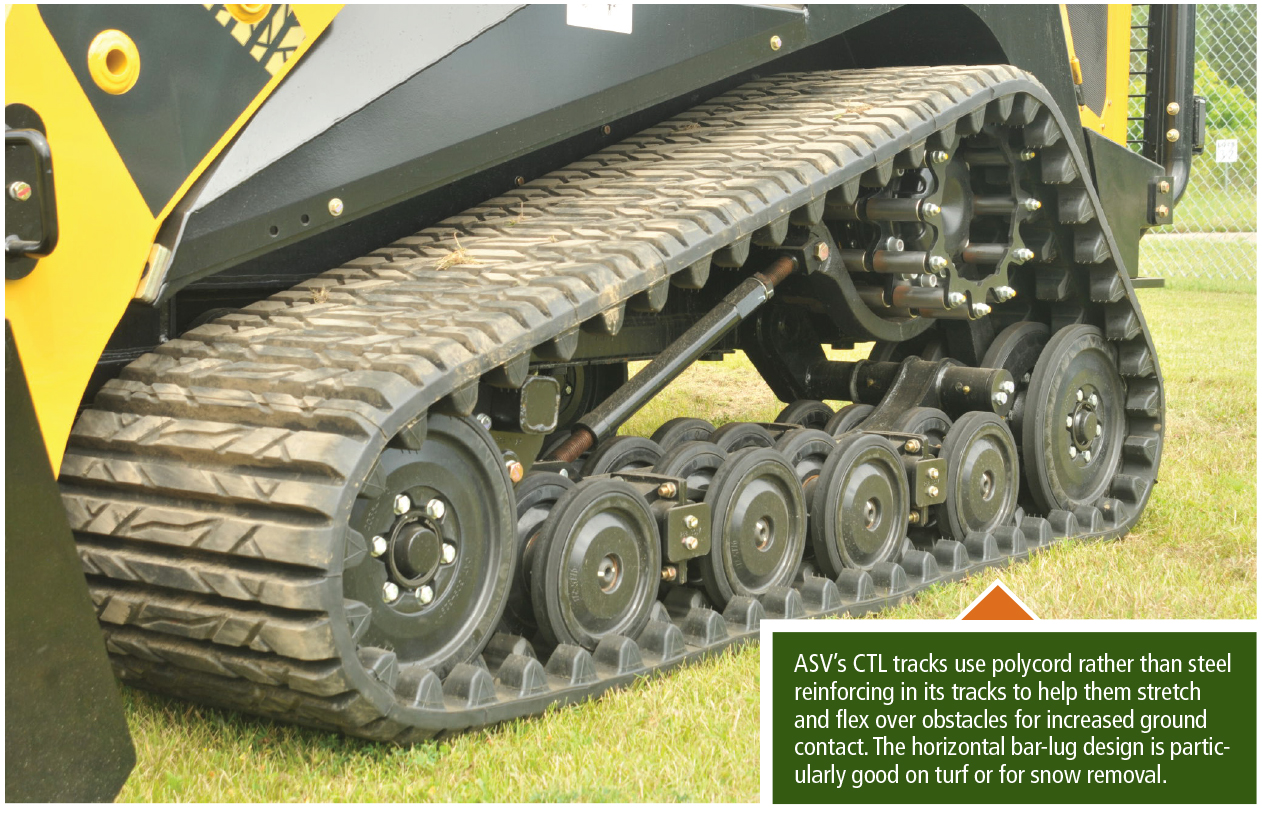
The rubber tracks on which all compact track loaders ride give contractors the ability to go where skid steers and other equipment dare not tread. The low ground pressure and excellent flotation characteristics of these undercarriage systems protect turf and sensitive paved surfaces, provide great traction in snow and ice and allow contractors to keep working even on wet and soft ground where other machines would sink.
Keeping these tracks in good condition is the number one maintenance consideration for CTLs. “It is the most expensive wear component on the machine,” says Ryan Anderson, product marketing specialist, skid steers and CTLs at New Holland.
Best practices for CTL maintenance aren’t rocket science, but neglect will cost you. Depending on how you treat them, the tracks could last as little as 400 hours or up to 2,000 hours. The average is somewhere between 1,200 and 1,600 hours. “I hear about guys who get 2,000 hours on their track, but they’re the owner-operators who know how to take care of their machines and run them efficiently and effectively,” says Anderson.
Getting your tracks to last as long as possible depends on two things: ground conditions and operator skill.
Site conditions
As with tires, the conditions underfoot make a big difference in the longevity of your tracks. Hard paved surfaces produce more abrasion and wear. Rocky conditions cause cuts and chipping. In soft dirt, sand or turf tracks can last a long time.
 “I talked to a customer who was using a CTL to build a golf course where all the contoured surfaces were done on hard shale, via a breaker or blasting,” says Mike Fitzgerald, Bobcat loader product specialist. “He said one week on those surfaces put more wear on his tracks than they had experienced in the first 400 hours of operation on softer surfaces. In cases like that, you have to ask if a CTL is the right machine for the application. Maybe a skid steer would have been better.”
“I talked to a customer who was using a CTL to build a golf course where all the contoured surfaces were done on hard shale, via a breaker or blasting,” says Mike Fitzgerald, Bobcat loader product specialist. “He said one week on those surfaces put more wear on his tracks than they had experienced in the first 400 hours of operation on softer surfaces. In cases like that, you have to ask if a CTL is the right machine for the application. Maybe a skid steer would have been better.”
Above all, avoid running over the “three Rs:” rocks, roots and rebar. Inventory the site before you start work and remove these tread killers if necessary.
Operator care
Though the job determines the ground conditions, you can control how you or the operator runs the machine. “In less aggressive situations – mud, sand or soil – anyone can operate and have minimal impact to an undercarriage,” says Buck Storlie, product line manager for ASV. “But when the material gets aggressive, then the operator can have more of an impact on the life of the equipment.”
Storlie recommends avoiding excessive spinning and counter-rotation. Three-point turns are a better choice, and that’s true for all brands of tracks and CTLs. “A quick look in the operator’s manual will explain those things,” Storlie says.
Slope is another consideration. Running side-slope puts wear on the imbedded steel guide lugs on the downhill side of the track. Flanges on the drive sprocket and idlers help keep the track on the undercarriage, but if the track tension is loose, running side-slope can result in the machine detracking. When possible it’s much easier on the tracks to go straight up and down a slope rather than lengthwise across it.
“When working on hard surfaces like asphalt or concrete, some operators will sprinkle a little material like sand or dirt on the surface to help the tracks slide instead of skid,” Fitzgerald says.
Also, when you go over a curb or obstacle, come at it head-on rather than at an angle. Hitting a curb at an angle increases the chances of tearing the track, especially along the edges.
Track tension

On most CTLs you adjust the tension by adding or removing grease from a cylinder. Pump grease into this cylinder, and it pushes the drive sprocket and front idler apart; let some grease out to reduce tension or remove the tracks. Other track tensioning methods use hydraulics, and some maintain tension with an adjustable spring.
“Some operators working in sand will run the track loose because it minimizes some of the wear on the track’s metal imbeds and sprocket,” says Fitzgerald. “It doesn’t grind that material quite as hard, and they don’t have larger material or debris to worry about. Someone who is working in the mountains or areas with a lot of rocky material may run their tracks with tighter tension to prevent rocks and debris causing the tracks to come off. Once the operator knows what his application and conditions are, he can set that tension accordingly.”
“I’ve seen situations in harsh, deep woods environments where a loose track caused an idler to fracture,” says Anderson. “When you have that much play in the track, you start stressing those idlers.” Inevitably some material will get pushed up in and around the idlers, he says. “We recommend you clean out and inspect the tracks and undercarriage every 10 hours. If you keep the small stuff cleaned out regularly, that will limit the amount of debris that’s going through.”
Some OEMs will give you a specific measurement for track sag. Others depend on feel. What is important is to check the tension every 10 hours or so. Tracks stretched too tight across the undercarriage can cause the machine to work harder than necessary, eating up horsepower and fuel.
Replacement tracks
When you need to find a suitable replacement track, the easy choice is to go with the same brand and type that came as original equipment on the machine.
But before you do this, spend some time analyzing how well the original tracks performed in your typical applications and on jobsites. You may want to change to a different type of tread pattern, a different rubber compound, or a different width if your machine allows it.
“For a compact working width, go with a profile track,” says Anderson. “Landscapers need a smaller machine, smaller footprint and have a less aggressive tread style to work in tight environments. When the width of the machine is not an issue, they’re more likely to go with a wider track to gain more surface area and better traction.”
Tread types make a difference, too. The two main differences are between the multibar or “turf tread” with straight horizontal lugs and a block-style tread, says Anderson. The turf tread will minimally disturb the surface. But for a quarry, mining or forestry environment, you can get a block-type tread that will better resist punctures, chipping and abrasion. You can also find smooth track with no tread for landscapers and nonmarking tracks to prevent black marks on finished surfaces.
Some CTL owners in northern latitudes will use a bar-lug tread for snow plowing and a block-style tread for summer work, says Fitzgerald.
Aftermarket brands of CTL tracks are also a possibility but be aware that there is no “universal” track design because OEM undercarriages have a variety of sprocket, roller and flange designs that dictate the design of the interior elements of the track.
Companies like Bobcat will even have different undercarriage designs for different sizes of CTL, and ASV has a unique system that uses polycord instead of steel-cord reinforcing inside the rubber, says Storlie. All to say, the track spec is brand- and model-specific, so do your homework. After that, all you have to choose is tread type and manufacturer. Getting a warranty of at least 1,000 hours, regardless of whose track you choose, is also a good idea.
